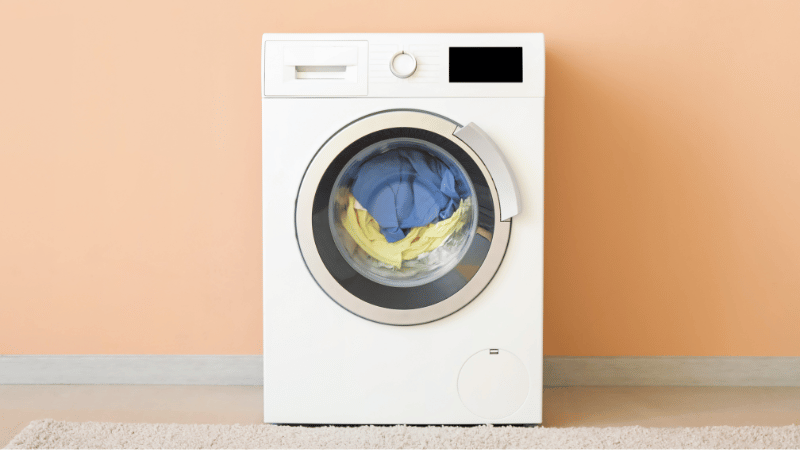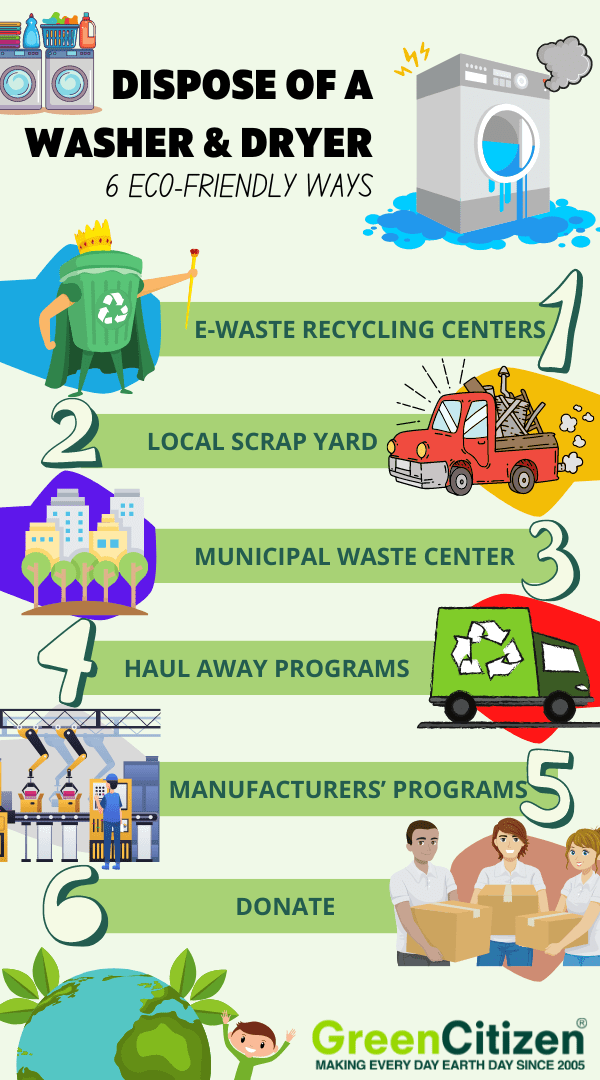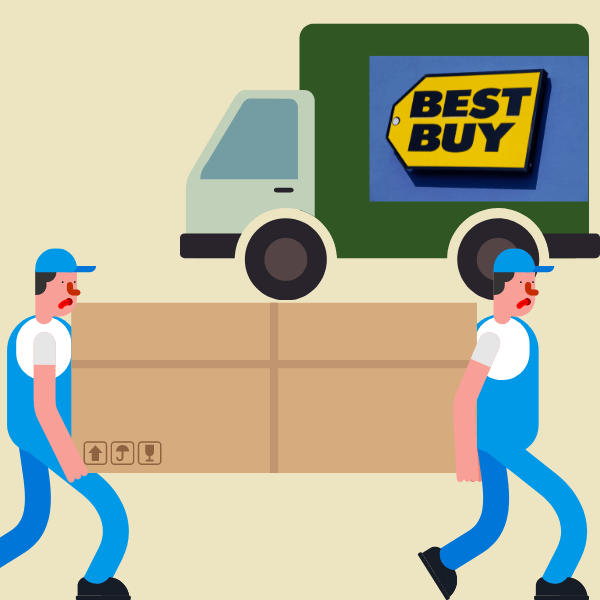Find out why it’s critical that you dispose of your old washing machine and dryer through an approved recycling program and where to find one close to you.

Key Takeaways
Disposing of my old washer and dryer recently turned into a surprisingly eye-opening journey. It got me thinking about how we can be eco-friendly even when we upgrade our household appliances. Let me share what I discovered—it might just change the way you think about recycling big appliances!
Recycling isn’t just about keeping stuff out of landfills; it's about saving resources and taking care of our planet. I learned that these big machines are packed with valuable metals like steel, copper, and aluminum.
Plus, they often contain harmful elements such as lead, mercury, and cadmium. Handling them right prevents these nasties from damaging our environment.
What's more, recycling helps cut down on greenhouse gases, conserves energy, and keeps hazardous materials in check. So, when you decide it's time for a new washing duo, consider this: your choice of washer and dryer disposal can significantly impact the planet.
Stay tuned, as I’ll show you the most planet-friendly ways to say goodbye to your old machines. It's easier than you think and makes a real difference—plus, you'll feel like an eco-warrior!
What To Do With Old Washer and Dryer?
Household appliance recycling is big business, and even an old washer and dryer will contain some valuable components and materials. The problem is that there are enough shady junk removal services out there that will take all the valuable stuff and dump the rest at a landfill.
That’s not something you want to have happen to your old appliances, do you?
The best way to avoid that is to carefully pick an option from this list.
1. E-Waste Recycling Centers - The Best Option
The best way to get rid of your old appliances is to contact a local electronic waste recycling specialist.
See, there’s so much more to washers and dryers than the valuable scrap metal they contain.
Those things are relatively easy to deal with, but a recent trip of my own to an e-waste recycling program convinced me of how important an eco-friendly junk removal service really is. See, once you strip away all the scrap metal on the outside and the drum inside, you’ll notice that there’s a lot of stuff left.
There are rubber tubes and pipes, plastic components, and quite a few electronic parts and cables.
And, it’s these parts that are more difficult to recycle properly, and it’s something that e-waste recycling providers specialize in.
It’s not just about separating them into different recyclable materials by hand because, in the case of cables and electronic components, there’s a specialized process of breaking them down into their metal and plastic parts.
So, where can you find one of those eco-conscious recycling programs?
The best way to find a washer and dryer disposal near you is to use our Green Directory. Simply select the service you’re looking for, enter your zip code, and you’ll get a load of options close to you.
These are all regulated and accredited services where you’ll have much higher confidence that your old washer or dryer doesn't end up becoming an environmental hazard.
2. Local Scrap Yard
One way to recycle your washer and dryer for money is to contact local scrap metal recyclers.
As part of their appliance disposal process, these companies will break down the machines to gather up all the valuable metals. In most cases, they will then gather up all the remaining materials and pass them onto e-waste recycling facilities. But some scrap yards have upgraded their waste processing capabilities for electronic goods as well.
Some scrap yards might also offer junk removal services where they haul your old washing machines and dryers away for free.
You might not make any money on the old appliances, but it could save you a lot of time and effort, especially if you don’t have someone to help you or your trunk is too small for larger appliances.
NOTE: Inquire thoroughly about the recycling process of your local scrap yards. Make sure that they don't throw the hazardous material away in a landfill.
3. Municipal Waste Center
Now, it’s important to understand that even if you have a municipal waste collection service for your general household and recycling waste, it doesn’t mean you can just get rid of old appliances by leaving them curbside next to your trash.
In pretty much every city, county, and state, you could end up with a significant fine for that.
But your municipal waste center will quite likely have a collection program for all types of large and small appliances. And in many cases, it’s a free service as long as you drop the washing machine or dryer off yourself.
The one thing I would suggest is to call your local municipal waste center to check if they do offer an appliance removal service, which might save you time and effort.
4. Departmental Stores' Haul Away Programs
Another great option for appliance recycling is to have your old washing machine and/or dryer hauled away at the same time that your new appliances arrive.
Stores like Best Buy offer free delivery options on some washers and dryers, and for a relatively small fee, they will also take away the old washers.
The Home Depot also offers similar haul away services.
The big question is what happens to them after they leave your home, right?
So, for stores like Best Buy and Costco, they do one of two things.
They either partner with other junk removal companies and e-recycling companies to deal with the old appliances. Or they have contracts with the manufacturers to return old washing machines and dryers back to them directly.
5. Manufacturers’ Recycling Programs
Some manufacturers, including LG, have started offering their own recycling programs, and it’s often driven by corporate efforts to allow their businesses to achieve a net-zero eco-footprint. Bosch and Whirlpool also offer similar recycling services.
And the more they are involved in dealing with their old devices directly, the better they can score from an eco-conscience perspective.
Now, the only way to find out whether a manufacturer has a direct washing machine and dryer disposal service is to get in contact with them.
Some also make a big deal of this in their marketing materials and on their websites and may offer a free collection if you’ve bought a newer and more energy-efficient one of their models.
6. Donate Your Washing Machine
Some people get rid of appliances because they are no longer the most energy and water-efficient models. But if the old appliance is still working fine, then there are several options to make sure you extend its life.
The Salvation Army is possibly your best first call, and as long as washing machines and dryers are working and visually in good condition, they will gladly accept your donation.
Not only does this extend the life of appliances, but it could also significantly help out people with limited resources.
And if there’s no Salvation Army collection point near you, then try to call a few local charity stores where you might even get a free pickup service.
Can You Recycle the Washer And Dryer?
Yes, you can recycle both washers and dryers. They contain valuable materials like steel and copper that can be recovered and reused, making recycling a sustainable option for disposal. You can use e-waste recycling or junk removal companies to safely and properly get rid of your old machines.
What Is The Scrap Value Of A Washing Machine?
The scrap value of a washing machine hinges on local metal prices, its condition, age, and the metals it contains, mainly steel.
As a rough estimate, you might expect to receive anywhere from $5 to $25 for a typical washing machine from a scrap yard, depending largely on the current market prices for metals like steel. Please note that prices can vary significantly by region and over time due to fluctuations in the global metal markets.
Can You Leave Your Washing Machine Or Dryer At The Curb?
Leaving your washing machine or dryer at the curb for disposal is generally NOT advisable. Many places have rules against this and you could face fines. Always check if your local waste management services permit curbside disposal of large appliances. This ensures you comply with local regulations.
Can You Get Rid Of My Old Washer and Dryer For Free?
Yes, you can often dispose of your old washer and dryer without any cost, depending on what’s available in your area. Some retailers might haul away your old appliance for free when you buy a new one.
Alternatively, local scrap yards might pick them up at no charge since they profit from recycling the metal. Your municipal waste services might also have specific days for picking up large appliances for free.
If your items still work, consider donating them to organizations like the Salvation Army or Habitat for Humanity, who may offer free pickup. Another quick option is to list them for free on platforms like Craigslist or Freecycle, attracting locals who will take them off your hands without charging you.
How To Tell If Your Washer And Dryer Are Broken?
Now, beyond a washing machine and dryer simply doing absolutely nothing when you turn it on or some catastrophic error message displaying, there are a couple of signs to look out for.
If you notice any of these and your appliance is more than six or seven years old, then getting rid of it might be the best option.
1. Small Water Leaks
Regularly check underneath your machines to see if there’s even a small amount of water.
Sometimes, the water evaporates before it becomes a large enough puddle for you to notice. But if this happens unnoticed, then you could be facing a huge mess one day with a major water leak and having to call a professional water removal company.
2. Strange And Sporadic Noises
OK, washers and dryers make a lot of noises, but if you start hearing something you never noticed before, then it’s time to pay attention.
This could be a loud clanging or continuous grinding noise. And these could indicate some internal component has come loose and is about to do even more damage.
3. Clothes Don’t Come Out Dry
One sign that your dryer is no longer in good working condition is that you regularly have to turn it on again to fully dry your clothes.
This isn’t just annoying but could be a sign that there is a problem with either the heating element or the sensors. Either way, it might be fixable by a professional, but in many cases, you’ll get a new one for not much more than the price of the repair.
4. Cycle Times Take Longer Than Before
If you notice that washing or drying times are taking a lot longer than before, then that’s another sure indicator that something isn’t quite right.
Now, you could live with it for a while, but you would be risking that the old appliance just stops one day.
5. Excessive Energy Usage
This is a bit more difficult to determine, but if you suddenly notice much higher energy bills, then it could be down to a problem with your washer or dryer. This is especially the case if the machines are in use multiple times a day,
In that case, an investment in a more modern and energy-efficient model could make getting rid of the old one a great choice.
Why Should You Recycle Your Old Washing Machine Responsibly?
Whether you’re buying a new appliance to gain more energy efficiency or your old one has simply broken down beyond repair, it’s important to think of the environment for the outgoing machine as well.
And that’s a mistake many people make.
They buy a new appliance and do all the research to find the most energy and water-efficient models to have a more positive impact on the environment and climate.
But then they don’t pay enough attention to what happens to the old washer or dryer.
According to EPA figures, 2018 saw a peak of 57 million tons of durable goods waste. Those durable goods include small appliances as well as larger household appliances that have an expected life of more than three years.
Here’s the scary part.
Only about 11 million tons entered the cycle economy, with the majority of the rest dumped at landfills.
That’s a serious waste of valuable resources with serious impacts on the environment.
Have You Found A Responsible Appliance Disposal Service?
If you have old appliances and are concerned about making sure it’s environmental impact is kept to a minimum, then avoid just picking the first junk removal company that appears in Yelp search results.
The safer approach is to use Green Citizen’s Green Directory and enter your zip code along with the service you require.
You’ll get the closest approved and certified recyclers to ensure your e-waste is properly dealt with.














Pingback: Gas or Electric Dryer | Which Is Better for Environment
Pingback: Should I Ditch My Dryer?
Great info! Thanks for the insight! 🙂